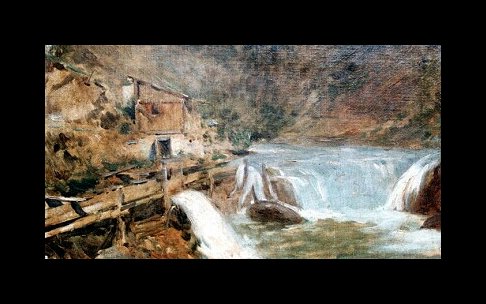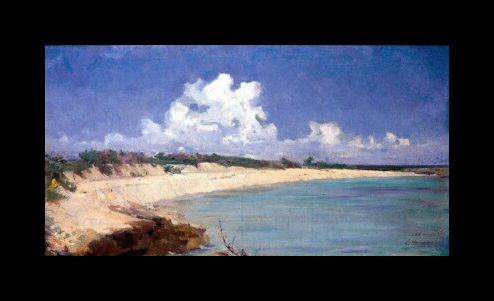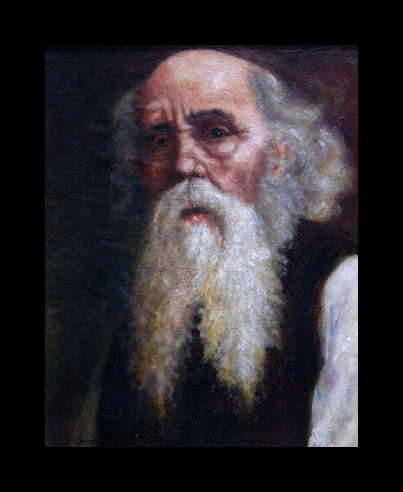Leopoldo Romanach (1862-1951)
Get a Romanach Certificate of Authenticity for your painting (COA) for your Romanach drawing.
For all your Romanach artworks you need a Certificate of Authenticity (COA) in order to sell, to insure or to donate for a tax deduction.
Getting a Romanach Certificate of Authenticity (COA) is easy. Just send us photos and dimensions and tell us what you know about the origin or history of your Romanach painting or drawing.
If you want to sell your Romanach painting or drawing use our selling services. We offer Romanach selling help, selling advice, private treaty sales and full brokerage.
We have been authenticating Romanach and issuing certificates of authenticity since 2002. We are recognized Romanach experts and Romanach certified appraisers. We issue COAs and appraisals for all Romanach artworks.
Our Romanach paintings and drawings authentications are accepted and respected worldwide.
Each COA is backed by in-depth research and analysis authentication reports.
The Romanach certificates of authenticity we issue are based on solid, reliable and fully referenced art investigations, authentication research, analytical work and forensic studies.
We are available to examine your Romanach painting or drawing anywhere in the world.
You will generally receive your certificates of authenticity and authentication report within two weeks. Some complicated cases with difficult to research Romanach paintings or drawings take longer.
Our clients include Romanach collectors, investors, tax authorities, insurance adjusters, appraisers, valuers, auctioneers, Federal agencies and many law firms.
We perform Leopoldo Romanach art authentication, appraisal, certificates of authenticity (COA), analysis, research, scientific tests, full art authentications. We will help you sell your Leopoldo Romanach or we will sell it for you.
Painter, teacher, and world traveler, Leopoldo Romanach gave inspiration to nearly three generations of Cuban painters. During his lifetime, he gained great acclaim and won medals and awards world-wide for his art. He carved a place for himself among other painters during the Early Republic period by using pure color methods, chiaroscuro and by applying his European training in his art.
Born in Cuba, Romanach moved to Spain at a young age and was schooled there most of his youth. At the age of fifteen he moved back to Cuba and later on enrolled at the San Alejandro Academy. He also received training in Italy on grants and afterwards lived in New York City for many years.
In 1900, he moved back to Cuba and became a professor at his Alma Matter, the San Alejandro School. There, he became inspiration for up and coming Cuban artists such as Amelia Pelaéz. Though trained in the Classical form, Romanach was very open to new methods of painting for his students, and did not discourage them from modern ideas.
Romanach is set apart from most well-known Cuban painters because he was never really a part of the Vanguard movement. Though he lived and worked in Cuba during the height of its popularity, Romanach did not choose to incorporate distinctly Cuban themes in his paintings. He did not use the Caribbean color palate of his contemporaries, nor did he paint Cuban myths or symbols. One could look at his paintings and guess that they were of any place in the world, and not necessarily Cuba. For example, “Paisaje con Cascada” is a painting of a waterfall.

This could be of a waterfall anywhere, and there are no clues as to whether or not it is a Cuban landscape. Perhaps it was Romanach’s initial training in Rome that inspired him to embrace a more “worldly” style, but it makes his work distinct from other artists still today.
The bulk of Romanach’s artistic oeuvre consists of landscapes, though he also painted beautiful portraiture, usually in the European style. However, even his seascapes don’t initially give away a Cuban essence, as one can see in “Marina”.

For this reason, some of Romanach’s work may have been wrongly authenticated as Floridian or even European work. His seascapes especially were reminiscent of those done by European Impressionists, and a palm tree would be the only thing that contrasts his work from theirs. From the blurry shoreline to the wispy clouds in an intense blue sky, Romanach’s seascapes take on a highly European feel.
Though his themes were not highly Cuban, political or innovative in nature, his work was stunning nonetheless. At times, he has an almost Impressionistic hand, but his portraiture is almost always photo Realistic—with a hint of Expressionism. Take for instance, his chiaroscuro laden portrait “Viejo Barba Blanca”.

This portrait has all of the Classical elements used by the old masters, but the subject is given a depth and personality that is usually lost by other artists.
One way to tell whether or not you own a piece of art by Romanach is to look for his signature. Unlike most artists, he would often sign in the upper right hand corner, underlining his name. There is no mistaking his signature. In the beginning of his career while he was in school at San Alejandro, Romanach produced many sketches. However, it is his oil paintings he is best known for, so it is possible that there are some sketches of his still floating around, not authenticated.
Romanach’s work has been displayed world-wide and is currently housed in Cuba and Miami. He is still remembered today as a great art teacher, and accomplished and award winning Cuban painter.
